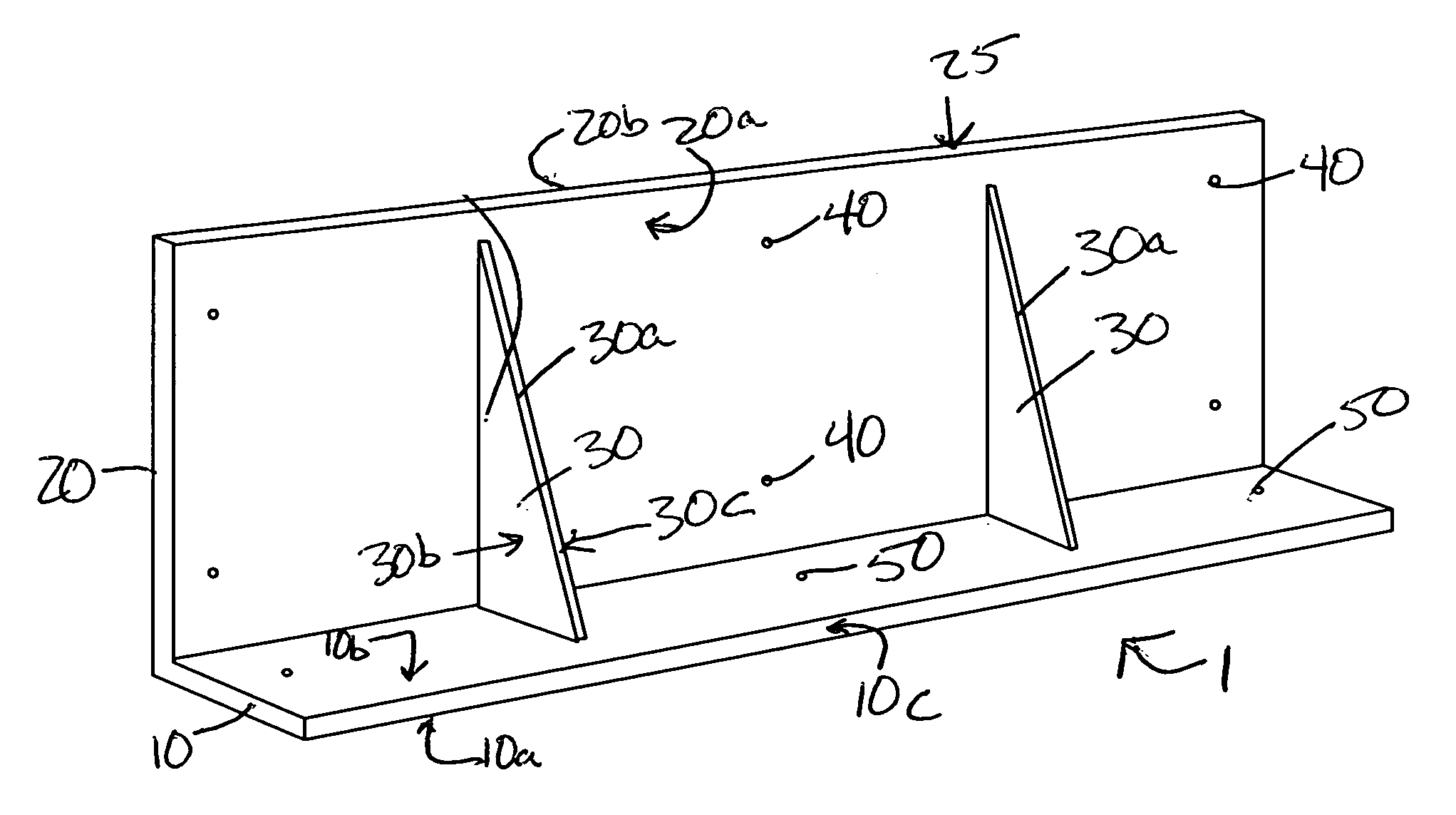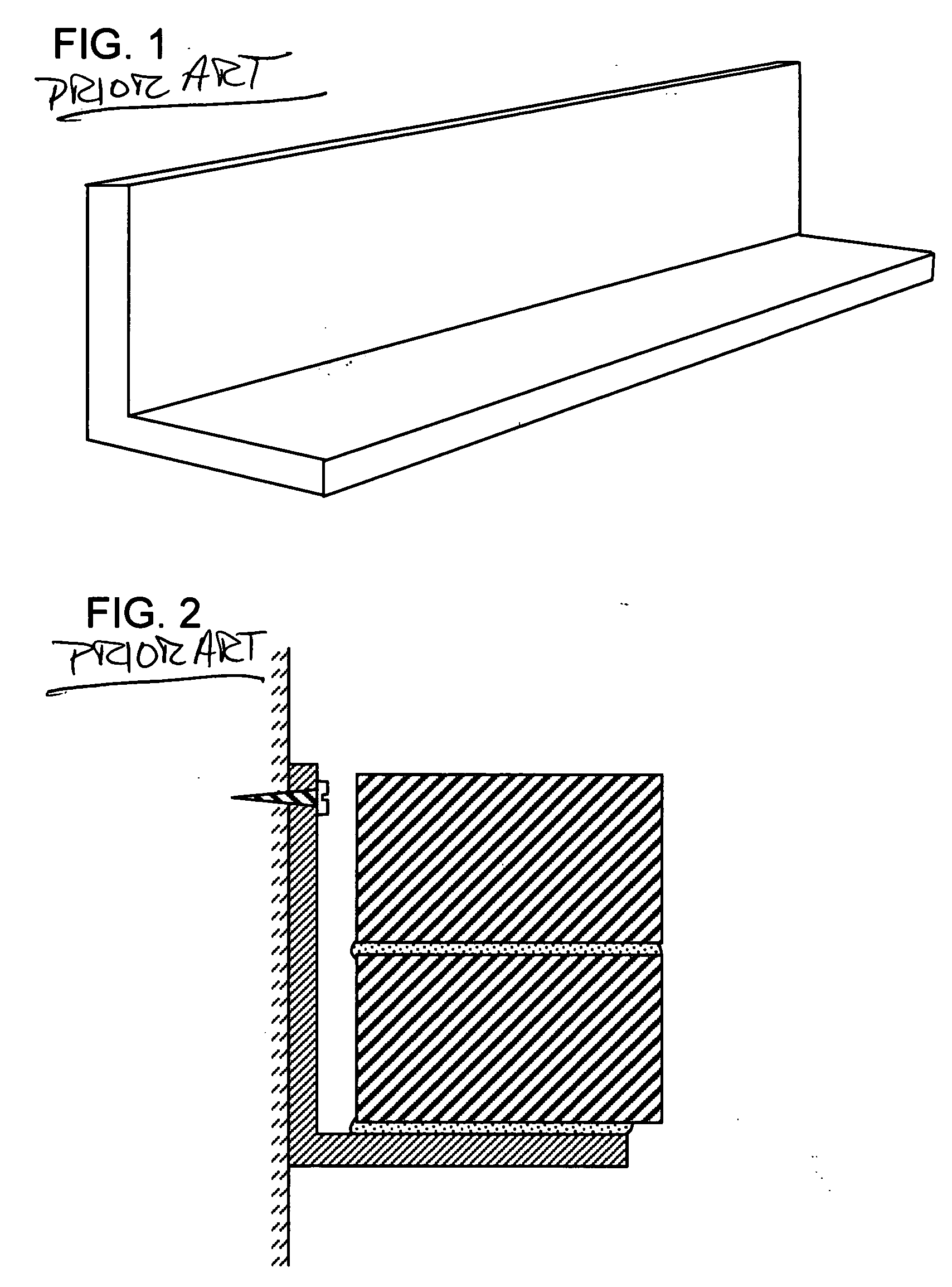Composite lintel system
- Summary
- Abstract
- Description
- Claims
- Application Information
AI Technical Summary
Benefits of technology
Problems solved by technology
Method used
Image
Examples
Embodiment Construction
[0057] Referring now to the figures where similar parts are numbered the same throughout. FIG. 1 is a perspective view of a typical embodiment of an angle iron used as a lintel in the prior art. As mentioned herein above, the angle iron typically comprises steel bar having an L-shaped cross-section. FIG. 2 shows the typical configuration of a prior art angle iron affixed to a building structure and having bricks and mortar supported thereon.
[0058] Referring now to FIGS. 3-5: FIG. 3 is a perspective view of the preferred embodiment of the invention. In this embodiment, the lintel 1 comprises a composite structure having a generally L-shaped cross-section. The lintel 1 has a vertical leg 20 which is affixed to the underlying structure (building header or frame above the opening) and which is rigidly attached to a horizontal leg 10, upon which bricks and mortar are laid.
[0059] The materials of construction of the vertical leg 20 and horizontal leg 10 of the lintel 1 are preferably co...
PUM
 Login to View More
Login to View More Abstract
Description
Claims
Application Information
 Login to View More
Login to View More - R&D
- Intellectual Property
- Life Sciences
- Materials
- Tech Scout
- Unparalleled Data Quality
- Higher Quality Content
- 60% Fewer Hallucinations
Browse by: Latest US Patents, China's latest patents, Technical Efficacy Thesaurus, Application Domain, Technology Topic, Popular Technical Reports.
© 2025 PatSnap. All rights reserved.Legal|Privacy policy|Modern Slavery Act Transparency Statement|Sitemap|About US| Contact US: help@patsnap.com



